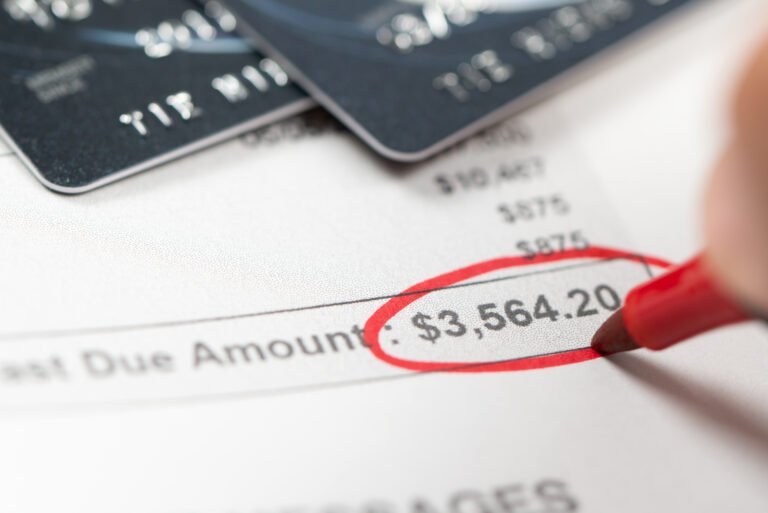
For many people, 2025 is the year to make a smarter financial move shifting from traditional banks to credit unions. Credit unions combine community values with practical financial benefits like lower fees, better rates, and personal service. If you’ve ever wondered how you join a credit union, the process is much easier than most expect. In fact, you can apply online or in person and become a member-owner within minutes.
This guide walks you through what credit unions are, who can join, and the exact steps to become a member. It’s designed to help you make an informed decision that fits your financial goals, whether you’re just starting out or looking to strengthen your financial foundation.
Understanding Credit Unions and Why People Are Switching
A credit union is a not-for-profit financial cooperative owned by its members. That simple difference of ownership changes everything. Instead of paying profits to shareholders, credit unions return earnings to members in the form of lower loan rates, higher savings returns, and reduced fees.
Unlike big commercial banks, credit unions focus on relationships, education, and financial empowerment. They exist to serve communities, not investors. As a member, you’re not just a customer you’re a part-owner, often with the right to vote on key decisions and elect board members.
In 2025, millions are making the switch to credit unions because of growing concerns about bank fees, impersonal service, and financial transparency. Credit unions also emphasize local support and financial education, offering a balance between digital convenience and human connection.
Who Can Join a Credit Union? (Eligibility Explained)
One of the most common misconceptions is that credit unions are exclusive. While some are tied to specific groups, many are open to almost anyone.
Common eligibility requirements include:
- Living, working, or attending school in a particular city, county, or region.
- Being part of a professional group or employer (like teachers, healthcare workers, or military).
- Having a family member who is already a credit union member.
- Making a small donation to an affiliated nonprofit or foundation that partners with the credit union.
This means even if you’re not part of a local organization, you can still join many credit unions by contributing a small one-time fee of $5–$15 to a partner cause. These are called “open-to-anyone” credit unions, and they make access easy regardless of where you live.
You can explore available options and verify your eligibility through the National Credit Union Administration (NCUA) or MyCreditUnion.gov, both of which maintain up-to-date databases of federally insured credit unions.
The Easy 7-Step Process to Join a Credit Union
Joining a credit union is similar to opening a new bank account but with a more personal touch. Here’s a complete step-by-step guide.
1. Decide What You Want From a Credit Union
Before you join, think about what you need most. Are you looking for high-yield savings, low-interest auto loans, or a reliable local branch?
Ask yourself:
- Do I prefer online-only access or in-person service?
- Will I need ATM convenience nationwide?
- Do I want specialized products like youth accounts, homebuyer programs, or rewards checking?
Clarifying your goals helps you choose the right credit union for your lifestyle.
2. Research Eligible Credit Unions
Once you know your priorities, look for credit unions that match them. Start by searching local options or using tools like MyCreditUnion.gov’s locator. You can filter by region, membership type, or products offered.
Don’t overlook digital credit unions many now provide 24/7 online banking, free nationwide ATM access, and competitive loan products without physical branches.
3. Confirm Membership Requirements
Each credit union sets its own membership criteria. Review their website or call their member services to confirm eligibility. Common requirements include residency, employer affiliation, or a small donation to a partner group.
Some examples include:
- Alliant Credit Union (open via $5 donation to Alliant Foundation)
- Bethpage Federal Credit Union (open to all U.S. residents with $5 deposit)
- PenFed Credit Union (available through $5 savings account opening)
This flexibility means that joining a credit union is accessible to virtually anyone willing to meet a simple requirement.
4. Gather Required Documents

Once you find a credit union and confirm eligibility, collect the necessary information to apply. Typically, you’ll need:
- Government-issued ID (driver’s license, passport, or state ID)
- Social Security number or Tax ID
- Proof of address (utility bill, lease, or similar document)
- If applicable, proof of eligibility (such as a pay stub, membership certificate, or donation receipt)
Having these documents ready will make your application smoother and faster.
5. Apply for Membership
You can usually apply online, by mail, or in person. Online applications are becoming standard and often take less than 10 minutes.
During this step, you’ll create your member account, verify your identity, and agree to the credit union’s membership terms.
Once approved, you officially become a member-owner, gaining access to all of the credit union’s products and services.
6. Make Your Initial Deposit
Most credit unions require a small initial deposit to open your “share savings account.” This deposit often $5 to $25 represents your ownership share in the credit union.
Your account earns dividends, which are similar to interest but reflect your share of the credit union’s earnings.
7. Explore Products and Member Benefits
After joining, take full advantage of what your credit union offers. These can include:
- Low-rate auto, personal, and home loans
- Free checking and savings accounts
- Access to nationwide shared ATMs and branch networks
- Credit builder programs and secured cards
- Financial education resources and community events
Many credit unions also provide special perks like student-friendly accounts, retirement planning tools, and small business services.
What Happens After You Join
Once your membership is active, your credit union relationship begins to grow. As a member, you gain ownership rights and access to exclusive financial tools. Your savings account is called a share account, and your earnings come as dividends instead of interest.
Credit unions are federally insured by the NCUA, which protects deposits up to $250,000 per member, per institution just like the FDIC does for banks. You can verify insurance details through the NCUA’s Share Insurance Estimator.
If your credit union participates in a shared branch or ATM network, you can perform everyday transactions across thousands of locations nationwide, a major convenience often overlooked by newcomers.
Tips for Choosing the Right Credit Union
To make the most of your membership, it’s important to choose wisely. Here’s how to evaluate your options before joining:
- Compare Rates and Fees: Review current rates on savings, CDs, auto loans, and credit cards. Credit unions often post this data online.
- Check Accessibility: Ensure the credit union offers mobile apps, ATM access, and digital services you’ll actually use.
- Assess Community and Education Efforts: Many credit unions reinvest in financial literacy programs as a sign of genuine member commitment.
- Confirm Federal Insurance: Always check NCUA.gov to confirm your deposits are protected.
Can Credit Unions Help Build Credit?

Absolutely. One of the biggest advantages of joining a credit union is access to personalized programs that support credit growth and financial health.
Many credit unions offer credit builder loans, secured cards, and financial counseling for members who want to establish or rebuild credit. Because decisions are made locally, members often get more flexibility than with large banks.
Some even provide free credit score tracking and workshops on budgeting, debt management, and homeownership. Over time, this approach helps members move from basic savings accounts to full financial independence.
If you want to see how credit scores impact real-world decisions, check out our guide on the minimum credit score typically required to lease a car it shows why building credit matters in everyday finance.
Switching From a Bank to a Credit Union
If you’re ready to leave your traditional bank, switching is simple and stress-free. Follow these steps for a smooth transition:
- Open your new credit union account first. Deposit your starting funds and confirm your account is active.
- Move direct deposits. Notify your employer or benefits provider to redirect income to your new account.
- Update automatic payments. Change billing information for utilities, subscriptions, and other recurring charges.
- Verify transfers. Allow time for all transactions to clear before closing your old account.
- Close your previous account safely. Confirm any remaining checks or payments have been processed.
If you want to understand your consumer rights when switching financial institutions, visit the Consumer Financial Protection Bureau (CFPB). Their guides explain how to transfer accounts and avoid hidden fees.
Final Thoughts: Joining a Credit Union in 2025
Credit unions continue to grow because they represent a return to human-centered banking where service, trust, and shared benefit come first. Joining one means more than opening an account; it’s a way to take ownership of your financial future.
Whether you join a local community credit union or a nationwide one that anyone can access, you’ll enjoy better rates, lower fees, and a genuine focus on your goals. In an era of digital transformation, credit unions balance modern convenience with values that never go out of style.
To find your ideal match, explore MyCreditUnion.gov, compare eligibility and rates, and take that first step toward a more empowering financial partnership.







